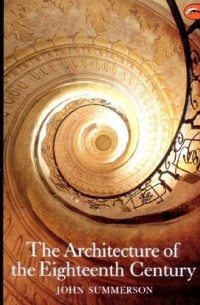
Автор
John Summerson — новинки
- 6 изданий на 3 языках
-
Georgian London (Paul Mellon Centre for Studies in Britis) John Summerson
ISBN: 0300089880 Год издания: 2003 Язык: Русский Book DescriptionIn this classic of English architectural history (first published more than half a century ago), John Summerson provides a perceptive and highly readable account of a major building period in the history of London. Encompassing the -
Heavenly Mansions (Reissue) John Summerson
ISBN: 9780393318579 Год издания: 1998 Язык: Английский Heavenly Mansions (Reissue) -
Architecture in Britain: 1530-1830 John Summerson
ISBN: 978-0300058864 Год издания: 1989 Издательство: Yale University Press Язык: Английский In this book Sir John Summerson charts the development of architectural theory and practice from Elizabeth I to George IV. Questions of style, technology, and the social framework of architecture are resolved as separable but always essential components of the building world. Men of genius and buildings of fame emerge: Inigo Jones, Wren, Vanbrugh, Adam, Soane; Hampton Court, St Paul's Cathedral, London squares and the terraces and crescents of Bath. Appendices deal with Scottish architecture before the union and buildings in the thirteen colonies of America. The book is a companion to Ellis Waterhouse's Painting in Britain, 1530-1830 and Margaret Whinney's Sculpture in Britain, 1530-1830; colour plates have been added to this new edition. -
The Architecture of the Eighteenth Century John Summerson
ISBN: 978-0500202029 Год издания: 1986 Издательство: Thames & Hudson The architecture produced between 1700 and 1800 represents a classic perfection which no later age has equaled. The first half of the eighteenth century was pervaded by the spirit of the Baroque, epitomized most completely in palaces and churches: Schonbrunn in Vienna, the Winter Palace in St. Petersburg, the dazzling theatrical churches and Residenzes of Germany and Central Europe. After 1750 architecture turned away from Baroque toward Neo-classicism, whose most characteristic types included private houses, institutional buildings and planned towns--Bath, Philadelphia and Washington, with their theaters, museums, hospitals and banks. Summerson provides a succinct and elegant summary of the entire period, bringing into focus not only the stunning beauty of these buildings, but also the background of ideas from which they sprang. -
The Classical Language of Architecture John Summerson
ISBN: 978-0500201770 Год издания: 1980 Издательство: Thames & Hudson Classical architecture is a visual "language" and like any other language has its own grammatical rules. Classical buildings as widely spaced in time as a Roman temple, an Italian Renaissance palace and a Regency house all show an awareness of these rules even if they vary them, break them or poetically contradict them. Sir Christopher Wren described them as the "Latin" of architecture and the analogy is almost exact. There is the difference, however, that whereas the learning of Latin is a slow and difficult business, the language of classical architecture is relatively simple. It is still, to a great extent, the mode of expression of our urban surroundings, since classical architecture was the common language of the western world till comparatively recent times. Anybody to whom architecture makes a strong appeal has probably already discovered something of its grammar for himself.in this book, the author's purpose is to set out as simply and vividly as possible the exact grammatical workings of this architectural language. He is less concerned with its development in Greece and Rome than with its expansion and use in the centuries since the Renaissance. He explains the vigorous discipline of "the orders" and the scope of "rustication"; the dramatic deviations of the Baroque and, in the last chapter, the relationship between the classical tradition and the "modern" architecture of today. The book is intended for anybody who cares for architecture but more specifically for students beginning a course in the history of architecture, to whom a guide to the classical rules will be an essential companion.





